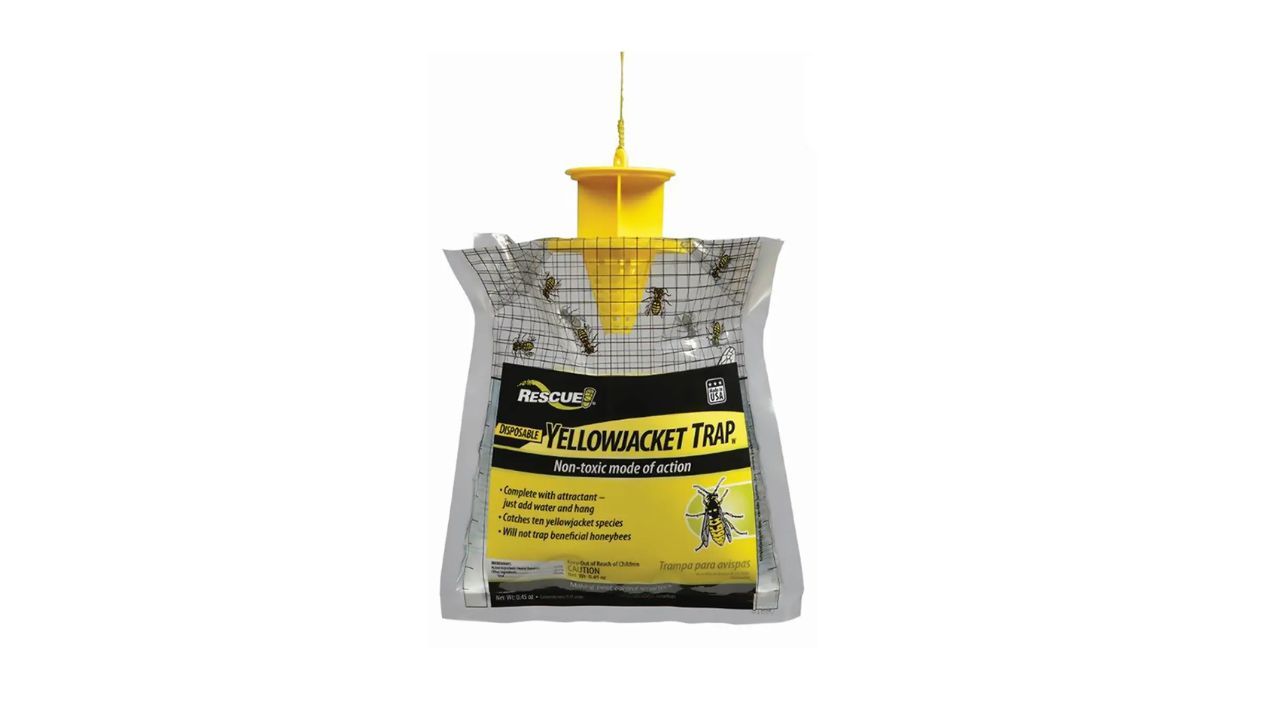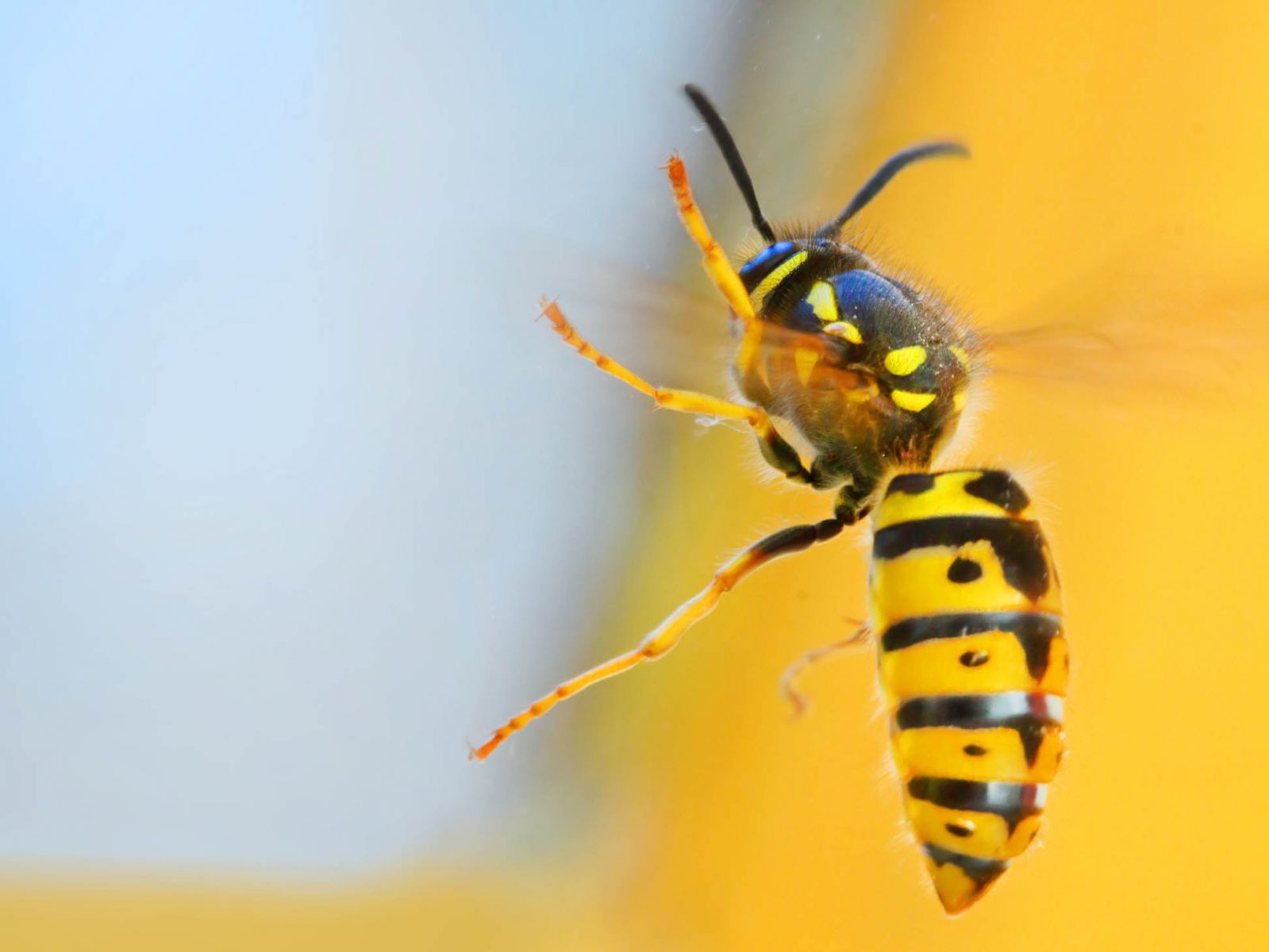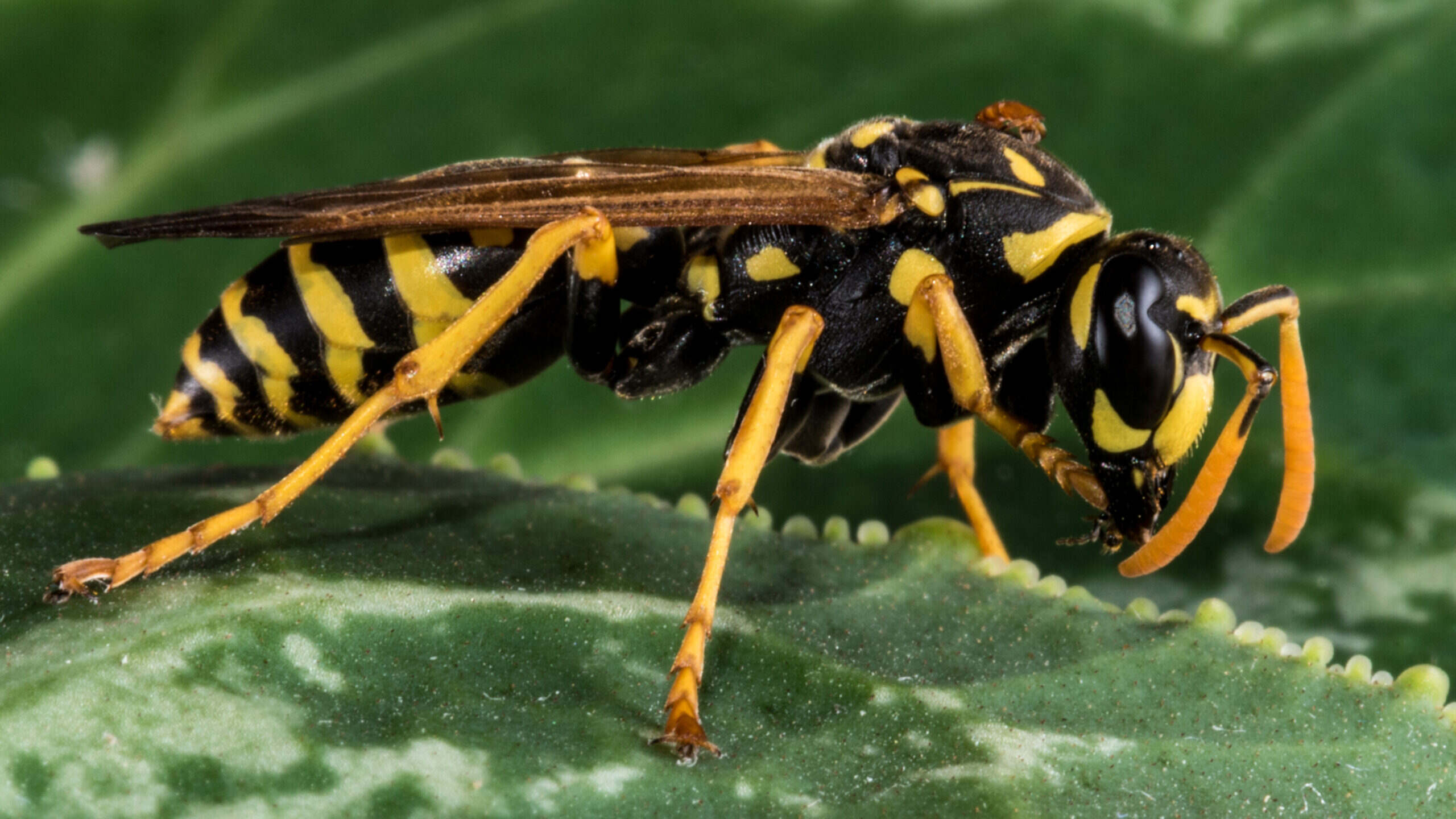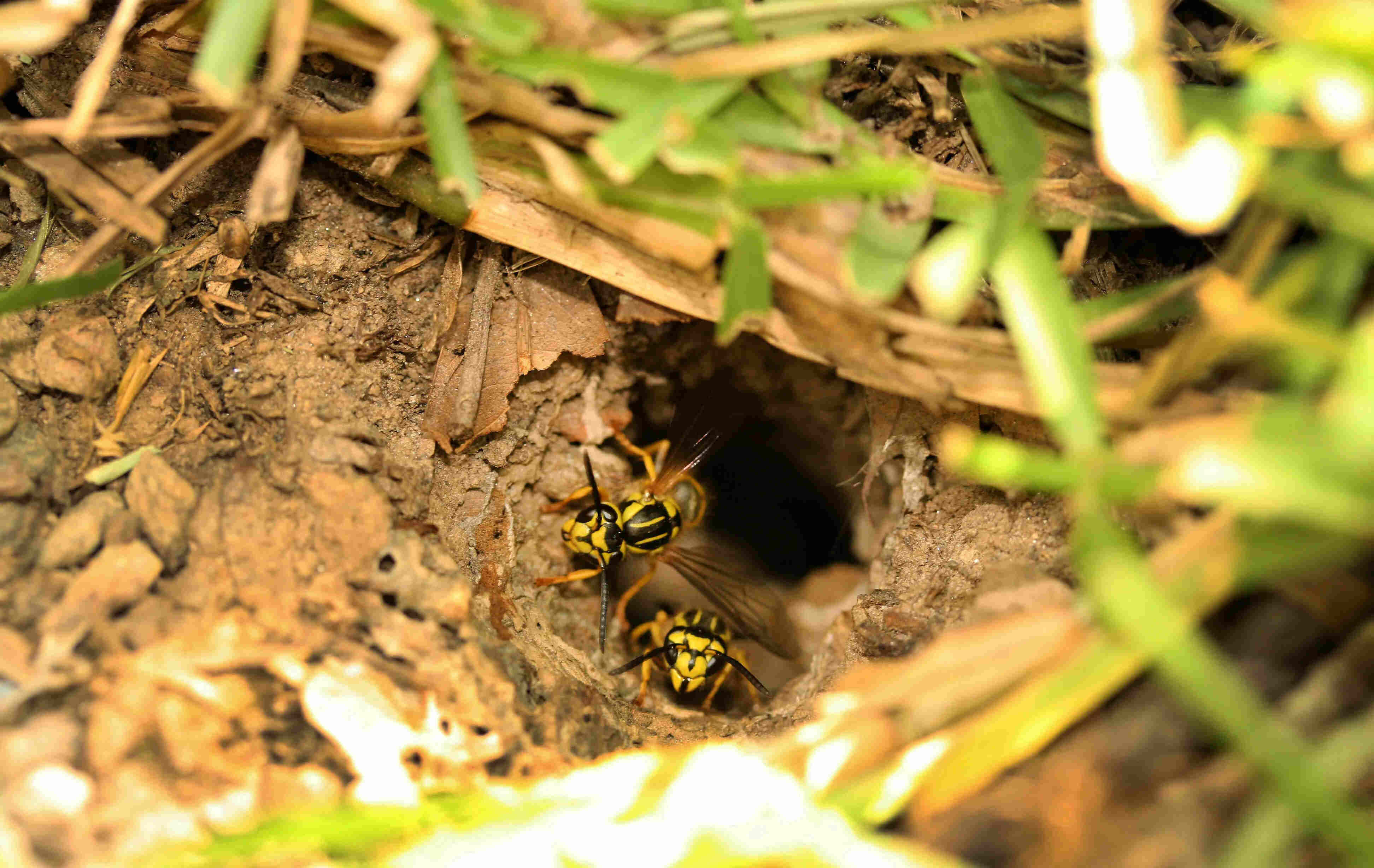Home>Maintenance & Safety>Pest Control Solutions>Why Yellow Jackets Are Aggressive


Pest Control Solutions
Why Yellow Jackets Are Aggressive
Modified: October 18, 2024
Discover effective pest control solutions to manage aggressive yellow jackets and protect your home. Learn how to keep these pests at bay with expert tips and strategies.
(Many of the links in this article redirect to a specific reviewed product. Your purchase of these products through affiliate links helps to generate commission for Storables.com, at no extra cost. Learn more)
Introduction
Yellow jackets are notorious for their aggressive behavior, striking fear into the hearts of many. These insects, often mistaken for bees, possess a distinct and formidable nature that sets them apart in the world of pests. Understanding the reasons behind their aggressive tendencies is crucial for effectively managing encounters with these stinging insects.
As we delve into the intricate world of yellow jackets, we will uncover the biological intricacies that drive their behavior. From their nesting habits to their foraging patterns, every aspect of their existence plays a role in shaping their aggressive nature. Furthermore, we will explore the various factors that contribute to their aggression, shedding light on the environmental and situational triggers that can provoke these insects.
By gaining a deeper understanding of yellow jackets and the elements that influence their behavior, we can equip ourselves with the knowledge needed to navigate their presence safely. Additionally, we will discuss practical strategies for avoiding confrontations with these insects, ensuring that both humans and yellow jackets can coexist harmoniously.
Join us on this enlightening journey into the world of yellow jackets, where we will unravel the mysteries behind their aggressive demeanor and discover effective ways to mitigate the risks associated with their presence.
Key Takeaways:
- Yellow jackets are aggressive due to their instinct to protect their nests, especially during the summer when new queens and males are produced. Understanding their behavior can help avoid confrontations.
- To avoid yellow jacket aggression, be aware of their nesting sites, manage food and trash properly, and remain calm during encounters. By taking proactive measures, humans and yellow jackets can coexist harmoniously.
Read more: How Harmful Are Yellow Jackets?
The Biology of Yellow Jackets
Yellow jackets, scientifically known as Vespula spp. and Dolichovespula spp., are a species of predatory wasps that belong to the Vespidae family. These insects are widely recognized for their distinct black and yellow markings, often leading to confusion with bees. However, unlike bees, yellow jackets are equipped with smooth stingers, allowing them to deliver multiple painful stings without sacrificing their own lives.
Nesting Behavior
Yellow jackets are social insects, living in colonies that can consist of thousands of individuals. Their nests are typically constructed in concealed locations, such as underground burrows, wall cavities, or within vegetation. The queen, responsible for initiating the colony, lays eggs that hatch into sterile female workers. These workers assume various responsibilities, including foraging for food, caring for the young, and defending the nest.
Foraging Patterns
As omnivorous scavengers, yellow jackets exhibit opportunistic feeding behaviors. They are attracted to a wide range of food sources, including sugary substances, proteins, and even human food. This scavenging behavior often brings them into close proximity with humans, especially during outdoor activities and gatherings.
Reproductive Cycle
Towards the end of the summer, the colony's focus shifts towards producing new reproductive individuals. This phase marks the emergence of male yellow jackets and new queens. Once mated, the new queens seek out suitable overwintering sites, while the existing colony declines and eventually disbands.
Read more: Why Do Yellow Jackets Keep Following Me
Defensive Mechanisms
Yellow jackets are highly defensive of their nests and can exhibit aggressive behavior when they perceive a threat. Their ability to sting repeatedly, coupled with their territorial nature, makes them formidable adversaries when their colony is disturbed. This defensive instinct is a crucial aspect of their biology, ensuring the protection and survival of the colony.
Understanding the intricate biology of yellow jackets provides valuable insights into their behavior and interactions with their environment. From their nesting habits to their foraging patterns, every aspect of their biology contributes to their unique place in the ecosystem and their reputation for aggression.
Factors That Contribute to Aggression
Yellow jackets' aggressive behavior can be attributed to a myriad of factors deeply rooted in their biology and environmental interactions. Understanding these contributing elements is essential for navigating encounters with these formidable insects.
Nest Defense
The primary trigger for yellow jacket aggression is the defense of their nest. These insects are fiercely protective of their colonies, and any perceived threat to the nest can provoke a swift and aggressive response. When a yellow jacket colony senses disturbance or perceives an intruder near their nest, the workers mobilize to defend their home, often resulting in stinging attacks. This defensive instinct is deeply ingrained in their biology, serving as a crucial mechanism for safeguarding the queen, brood, and the overall survival of the colony.
Seasonal Dynamics
As the summer progresses and the colony reaches its peak population, yellow jackets become increasingly territorial and defensive. This heightened aggression is linked to the colony's reproductive phase, during which the focus shifts towards producing new queens and males. The impending decline of the existing colony further amplifies their defensive behavior, as they strive to protect the emerging reproductives and ensure the continuation of their lineage.
Read more: Where To Watch Yellow Jackets Free
Food Resource Competition
Yellow jackets' foraging behavior often brings them into close proximity with humans, especially in outdoor settings where food and sugary substances are abundant. The competition for these food resources can trigger aggressive encounters, as yellow jackets vigorously defend their foraging territories. Additionally, the presence of human food and sugary drinks can provoke their interest, leading to confrontations when their foraging activities are disrupted.
Alarm Pheromones
When a yellow jacket is threatened or injured, it releases alarm pheromones that signal danger to other members of the colony. This chemical communication triggers a coordinated defensive response, leading to heightened aggression and stinging behavior. The release of alarm pheromones can quickly escalate a situation, resulting in multiple yellow jackets converging to defend against the perceived threat.
Environmental Stimuli
Environmental factors, such as loud vibrations, sudden movements, and strong odors, can also provoke aggressive behavior in yellow jackets. These stimuli can disrupt their surroundings, triggering a defensive response as they perceive these disturbances as potential threats to their colony's safety.
By recognizing the factors that contribute to yellow jacket aggression, individuals can adopt proactive measures to minimize confrontations and mitigate the risks associated with these insects. Understanding the intricate interplay of biological, seasonal, and environmental influences provides valuable insights into navigating interactions with yellow jackets effectively.
How to Avoid Yellow Jacket Aggression
Preventing confrontations with yellow jackets is essential for ensuring a safe and enjoyable outdoor experience. By implementing proactive strategies and adopting a cautious approach, individuals can significantly reduce the risk of triggering aggressive behavior in these formidable insects.
Read more: What Are Yellow Jackets Purpose
1. Awareness of Surroundings
Maintaining awareness of the surroundings is crucial when spending time outdoors, especially in areas known to harbor yellow jacket colonies. Being mindful of potential nesting sites, such as ground burrows, wall voids, and dense vegetation, can help individuals avoid inadvertently disturbing these colonies.
2. Proper Food and Trash Management
During outdoor gatherings or picnics, it is important to manage food and trash effectively. Keeping food and beverages covered, disposing of trash promptly, and maintaining clean eating areas can minimize the attraction of yellow jackets seeking food sources. Additionally, promptly cleaning up spills and avoiding leaving food unattended can help prevent unwanted interactions with these insects.
3. Avoiding Fragrant Scents
Yellow jackets are sensitive to strong odors, particularly sweet and floral scents. Using unscented personal care products, avoiding perfumes and heavily scented lotions, and refraining from wearing brightly colored or floral-patterned clothing can reduce the likelihood of attracting these insects.
4. Calm and Steady Movements
When in the vicinity of yellow jackets, maintaining calm and steady movements is essential. Sudden and erratic gestures can be perceived as threatening, potentially triggering defensive responses from nearby colonies. By moving deliberately and avoiding rapid motions, individuals can minimize the risk of provoking these insects.
Read more: What Are Yellow Jackets Good For
5. Protective Clothing
Wearing appropriate attire, such as closed-toe shoes, long sleeves, and long pants, can provide a physical barrier against yellow jacket stings. Additionally, tucking pant legs into socks and wearing gloves can further reduce the risk of accidental encounters with these insects.
6. Professional Removal of Nests
In cases where yellow jacket nests pose a significant threat due to their proximity to human activity, seeking professional pest control services for safe and effective nest removal is highly recommended. Attempting to remove nests without the necessary expertise can lead to agitated colonies and potential stinging incidents.
7. Remain Calm During Encounters
In the event of a close encounter with yellow jackets, remaining calm and composed is crucial. Swatting at the insects or engaging in sudden movements can escalate the situation, prompting defensive behavior. Slowly and carefully moving away from the area can help diffuse potential confrontations.
By incorporating these proactive measures into outdoor activities and adopting a cautious approach, individuals can minimize the risk of triggering aggressive behavior in yellow jackets. Cultivating an understanding of these strategies empowers individuals to coexist harmoniously with these insects, fostering a safer and more enjoyable outdoor environment.
Conclusion
In conclusion, the enigmatic world of yellow jackets unveils a complex tapestry of biological intricacies and environmental interactions that shape their aggressive behavior. From their social nesting habits to their opportunistic foraging patterns, every aspect of their existence contributes to their formidable reputation as stinging insects. The factors that drive their aggression, including nest defense, seasonal dynamics, food resource competition, alarm pheromones, and environmental stimuli, shed light on the multifaceted triggers that can provoke confrontations with these insects.
Understanding the nuanced interplay of these factors is paramount for individuals seeking to navigate outdoor environments safely and responsibly. By embracing proactive strategies and adopting a cautious approach, the risks associated with yellow jacket encounters can be effectively mitigated. Heightened awareness of nesting sites, meticulous food and trash management, and the avoidance of fragrant scents are pivotal in minimizing the attraction and provocation of these insects. Additionally, maintaining calm and deliberate movements, wearing protective clothing, and seeking professional assistance for nest removal contribute to fostering a harmonious coexistence with yellow jackets.
As we unravel the mysteries behind yellow jacket aggression, it becomes evident that knowledge and mindfulness are powerful allies in fostering a safer outdoor experience. By cultivating an understanding of these formidable insects and implementing practical measures to avoid confrontations, individuals can embrace the beauty of nature without undue fear or risk. Furthermore, the coexistence of humans and yellow jackets can be harmonized through informed awareness and respectful engagement, ensuring that both species thrive within their respective ecosystems.
In essence, the journey into the world of yellow jackets transcends mere entomological curiosity; it serves as a testament to the delicate balance of nature and the symbiotic relationship between humans and the natural world. By embracing knowledge, mindfulness, and proactive stewardship, we can navigate the outdoor realm with reverence and appreciation, fostering a harmonious coexistence with the diverse array of creatures that share our environment.
Frequently Asked Questions about Why Yellow Jackets Are Aggressive
Was this page helpful?
At Storables.com, we guarantee accurate and reliable information. Our content, validated by Expert Board Contributors, is crafted following stringent Editorial Policies. We're committed to providing you with well-researched, expert-backed insights for all your informational needs.












0 thoughts on “Why Yellow Jackets Are Aggressive”